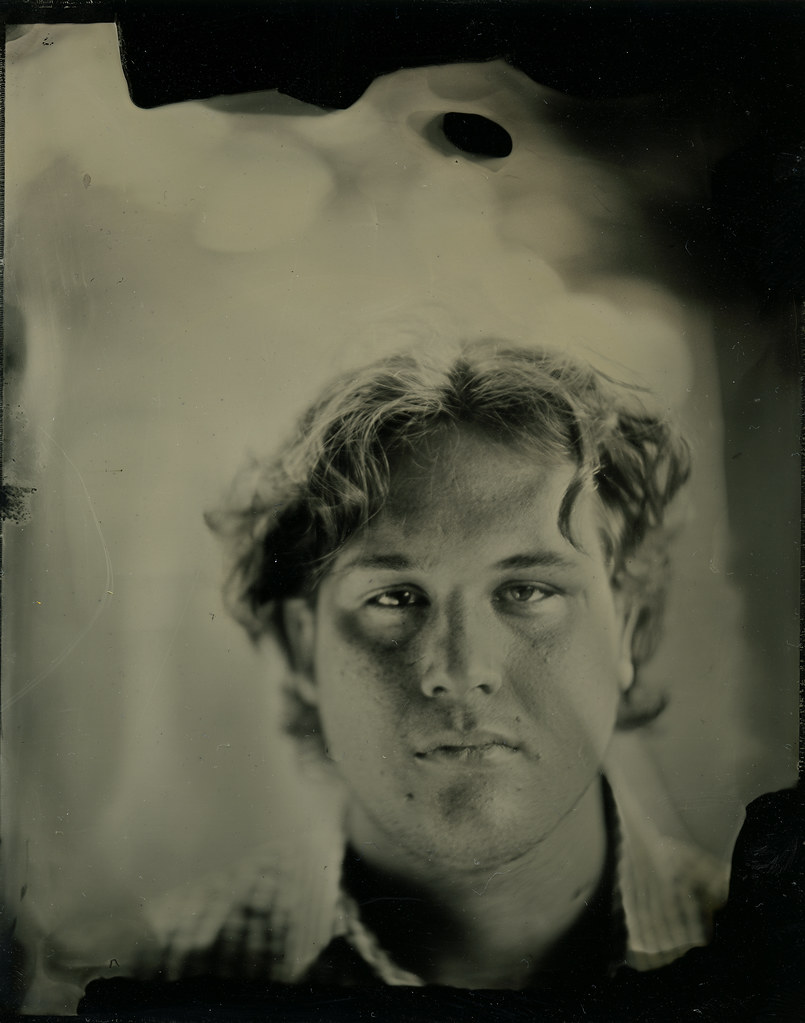A couple months before the 2014 Photostock event I got a message from a friend and fellow photographer on Facebook, Andrew Moxim. He had a single question, if I was interested in learning how to do wet plate. Well I jumped at the chance and said that I'd love to. Wet Plate Collodian is an ancient photographic technique that is still practiced today by several photographers, several of whom I've interacted with at Photostock events, so being able to learn from the masters, had me over the moon...or it might have been the ether fumes. The process is not for the faint of heart or the cautious. So when the time came, I had my buddy Kris sit down, fixed his head with a brace and setup the camera, a 4x5 Chamonix and a 1880s era Darolot lens...think big brass. Then under the watchful eye of Andrew I poured the collodian mixture onto a plate of trophy aluminum. Then to make it all the more dangerous the plate had to be sensitized. Now Andrew has a trailer setup that he can work on wet plate in the field, so into the mobile darkroom we go and then dip the prepared plate into a silver nitrate solution (watch out...get that stuff in your eyes, you go blind). Then into a modified holder and a quick dash over to the camera. Now while this is all happening, there's Kris still sitting there. One final check on the ground glass and on goes the lens cap and into the camera. Pull the darkslide, pull the cap. 1 1000, 2 1000, 3 1000, and cap on darkslide in. Back to the darkroom and pour the developer. Watch under the red glow of the lights I watch as a negative image comes up, let the density build to what I want, then into the stop bath. Next stage can be done in the light, into the fixer.
Disaster! The entire image vanished into this blue cloud...what had I done? Everything right apparantly, as shortly after the negative vanished the positive image emerged from the haze.
While created on metal, this is no metal print...the image is fixed there, no other duplicates of this exists. A True Original.



 LinkBack URL
LinkBack URL About LinkBacks
About LinkBacks



 Reply With Quote
Reply With Quote
